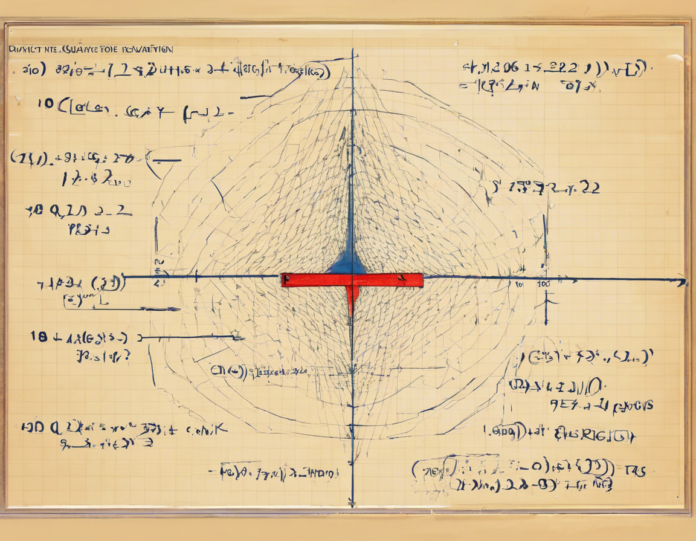In the realm of mathematics, non-quadratic equations hold a significant place due to their diverse nature and applications. While quadratic equations, of the form ax^2 + bx + c = 0, are widely studied and familiar, non-quadratic equations encompass a broader spectrum of polynomial equations with degrees higher than two. In this article, we will delve into the characteristics of non-quadratic equations, their types, methods to identify them, and their real-world significance.
Characteristics of Non-Quadratic Equations
Non-quadratic equations are polynomials of degree higher than two, which means they consist of terms raised to powers such as x^3, x^4, and beyond. Unlike quadratic equations that form parabolic curves when graphed, non-quadratic equations can have a variety of shapes and complexities depending on their degree and coefficients. These equations often involve more intricate algebraic manipulations and may require advanced techniques to solve.
Types of Non-Quadratic Equations
Cubic Equations
Cubic equations are of the form ax^3 + bx^2 + cx + d = 0, where a is not equal to zero. The fundamental theorem of algebra guarantees that cubic equations have at least one real root. Cardano’s method and the use of trigonometric functions are commonly employed to solve cubic equations.
Quartic Equations
Quartic equations are of the form ax^4 + bx^3 + cx^2 + dx + e = 0, where a is not equal to zero. Similar to cubic equations, quartic equations also have specific formulas for solving them, such as the Ferrari’s solution. Quartic equations can have zero to four real roots.
Higher-Degree Equations
Equations of degree higher than four are less common but still significant in various mathematical applications. While no general formula exists for solving quintic (degree five) or higher-degree equations, numerical methods, group theory, and Galois theory are often utilized to analyze and understand their properties.
Methods to Identify Non-Quadratic Equations
Degree of the Equation
The first step in identifying a non-quadratic equation is to determine its degree. If the highest power of the variable in the equation is greater than two, it is a non-quadratic equation.
Observation of Terms
Non-quadratic equations have terms with powers higher than two. By looking at the terms present in the equation, one can easily recognize whether it is quadratic or non-quadratic.
Coefficients of the Equation
Coefficients in non-quadratic equations will be associated with variables raised to powers higher than two. The presence of terms like x^3, x^4, etc., indicates a non-quadratic equation.
Real-World Significance of Non-Quadratic Equations
Physics
Non-quadratic equations are prevalent in physics to model various phenomena. Examples include equations governing the motion of celestial bodies, fluid dynamics, and electromagnetic fields. The study of these equations helps in understanding the behavior of the physical world.
Engineering
In engineering disciplines, non-quadratic equations play a vital role in designing complex systems and structures. Equations with higher degrees are utilized in areas such as signal processing, control systems, and telecommunications for optimal system performance.
Economics and Finance
Non-quadratic equations are employed in economic and financial models to analyze market trends, optimize investment portfolios, and predict future outcomes. These equations assist economists and financial analysts in making informed decisions based on mathematical modeling.
Frequently Asked Questions (FAQs)
1. How do I differentiate between a quadratic and a non-quadratic equation?
To differentiate between the two, look at the highest power of the variable in the equation. If the highest power is two, it is quadratic; if it is greater than two, it is non-quadratic.
2. What are some common methods to solve cubic equations?
Common methods to solve cubic equations include Cardano’s method, factorization, and the use of trigonometric functions such as the cosine or sine functions.
3. Are there general formulas to solve quartic equations?
Yes, there are specific formulas like Ferrari’s solution that can be used to solve quartic equations. These formulas involve combinations of radicals and coefficients to find the roots of the equation.
4. Can non-quadratic equations have complex roots?
Yes, non-quadratic equations can have complex roots, especially in higher-degree equations. Complex roots come in the form of a+bi, where a and b are real numbers and i is the imaginary unit.
5. How are non-quadratic equations applied in computer science?
In computer science, non-quadratic equations are utilized in algorithms, cryptography, image processing, and machine learning. These equations form the basis for developing efficient and robust computational models.
In conclusion, understanding non-quadratic equations is essential for students and professionals across various fields. By grasping their characteristics, types, identification methods, and real-world applications, individuals can appreciate the depth and breadth of mathematical concepts beyond quadratic equations. The versatility and complexity of non-quadratic equations foster innovation and problem-solving skills in mathematics and its related disciplines.

